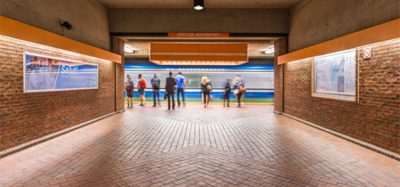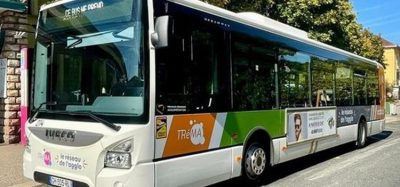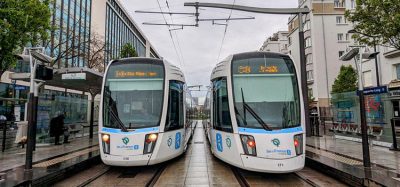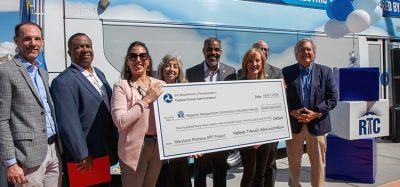Metro Madrid’s innovative infrastructure inspection machine
- Like
- Digg
- Del
- Tumblr
- VKontakte
- Buffer
- Love This
- Odnoklassniki
- Meneame
- Blogger
- Amazon
- Yahoo Mail
- Gmail
- AOL
- Newsvine
- HackerNews
- Evernote
- MySpace
- Mail.ru
- Viadeo
- Line
- Comments
- Yummly
- SMS
- Viber
- Telegram
- Subscribe
- Skype
- Facebook Messenger
- Kakao
- LiveJournal
- Yammer
- Edgar
- Fintel
- Mix
- Instapaper
- Copy Link
Posted: 30 November 2016 | Rubén Muñoz García (Project Manager at Metro de Madrid) | No comments yet
Following several years of suffering the impact of the economic crisis on business activity – clearly illustrated by the drop in user demand and required budgetary adjustments – Metro Madrid has persisted in its efforts to remain the preferential mobility option in the Madrid region. The following article by Rubén Muñoz García, Project Manager at Metro de Madrid, explains how the company has rallied to achieve great results despite the economic setbacks of recent years.
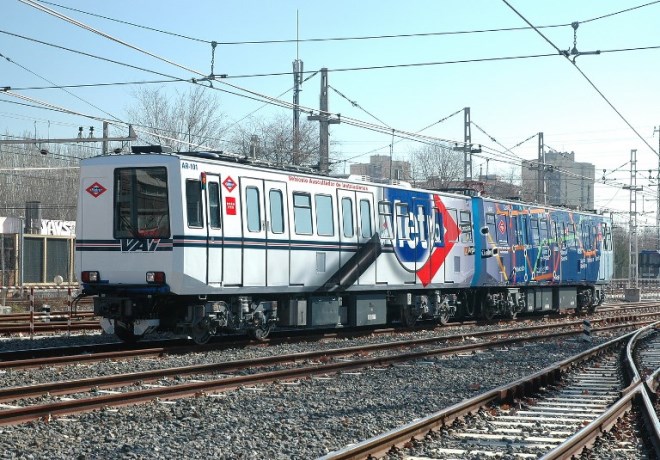

Against the backdrop of significant objective recovery, the company’s mission has proven its worth. Constructed and implemented by means of three major strategic lines, they set out to achieve the following:
- Provide a quality service
- Maximise the efficiency of resources
- Boost the image and reputation.
Right from its origins in 1919, Metro Madrid has continued to extend its network in order to offer 80% of the population a station entrance within a distance of 500m. At present the length of the service network is approximately 293km.
As a result of these extensions, the Metro Madrid management made the decision to technify maintenance procedures; adopting a commitment to innovation via R&D in order to assure the availability, quality and safety of the facilities and setting its maintenance model at the technological forefront.
For the purpose of carrying out this mission, a vehicle (named VAI – Vehículo Auscultador de Instalaciones) was designed to inspect the state of existing installations under actual operating conditions by being able to run concurrent with passenger vehicles.
Since it came into service in 2008 it has inspected the network on a regular basis. Its more than 120 parameters enable it to determine the current state of infrastructure as well as changes occurring in the installations and equipment present in tunnels; namely wear, geometry, dynamics, thermography, electric arcs, signal strength of the railway signals and communication systems, etc.
The terabytes of information collected from the inspections are used by the maintainer to ascertain the changes and behaviour patterns of the infrastructure and installations. These cover a very large area which incorporates the 294 stations and 278 inter-station sections that make up the Metro on both tracks (588km).
With objective data and within the operating framework, the maintenance staff ascertains the different parameters derived from the auscultated maintenance information, using advanced diagnostic tools especially for this purpose. In this way and by use of prediction techniques, they have the ability to optimise the useful life of the installations without compromising the safety of the service.
Utilising the auscultation information the engineers carry out studies with a view to increasing carriage capacity and thereby improving rolling stock performance levels. This has already proven successful, as in 2015 171.42 million cars/kilometre was achieved. As a result of these simulations, decisions are made about increasing the operating speed. In 2015 a commercial speed of 30.41km/h was achieved as the overall mean value on the lines as a whole, which represents an increase of 2.15% compared with 2014, which was 29.77km/h.
User demand in 2015 was for 569.73 million journeys, which represents an increase of 1.58% over 2014. Metro Madrid raised its operational offering by 0.73% in order to maintain train frequency and service quality on each line.
By utilising technical means, it is possible to monitor the influence that user demand has on the development of the installations. The decisions made by the maintenance teams have been aimed at foreseeing failures that might take place resulting in the facilities either being put out of service, or else operating in defective conditions.
In recent times the VAI has been a catalyst for maintenance services given its application for reviewing those working processes that could be improved with auscultation information. This has enabled such services to modernise their methods of analysis with relation to the behaviour of the installations.
The flow stemming from the auscultation is pyramidal; first reaching the maintainer, who is in charge of assuring the availability and safety of the installations; followed by the engineers and other services that make use of their studies and analyses in order to make decisions aimed at improving the facilities in order to assure the quality of the service.
In conjunction with each service, tools have been developed that meet their maintenance needs, with the result that specific advanced studies may be carried out with valuable information that wasn’t possible to acquire several years ago.
This transformation would not have been possible without a professional development plan. The Training and Knowledge Management Service designed a programme oriented toward specialisation of the maintenance staff, so that a quality training solution could be provided in line with the needs of the organisation and with the maximum optimisation of resources and budgets.
At present, maintainers possess the capability to selectively programme the sections of line that are necessary. This means that the maintenance activity is increasingly more sustainable, as effective use of the information and efficient management of the resources are assured. As such, the following benefits are achieved:
- Increase in the availability and quality of the installations
- Improvement and optimisation of daily activity
- Selective courses of action are taken depending on objective needs
- Auditing of jobs performed
- Management via KPI indicators
- Improvement in the external image projected.
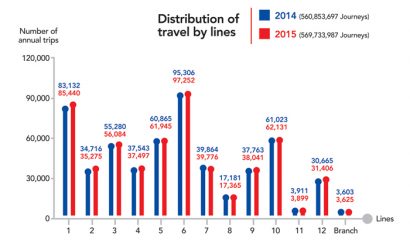

In organisational terms, the VAI carries out a transversal service within maintenance and engineering, as with the exchange of its auscultation data it successfully bonds both structures by way of a single source of
information shared by all. In this way, in-depth knowledge of these installations is obtained through having all the information interlinked and centralised in a single database.
The sum total of investments carried out by Metro Madrid in 2015 amounted to €63.60 million. Improved knowledge of the installations has made it possible to optimise the management of expenditure in
actions relating to the following:
- Comfort (degree of occupancy) and safety (prevention of operating events)
- Time (frequency, reliability and regularity)
- Environmental impact (consumption levels).
The improvements in the maintenance model contributed to the fact that in 2015 Metro Madrid achieved a 1.58% increase in the number of journeys over 2014.
In the light of these results, the VAI will continue to develop its technology with a view to providing maintainers and engineers with valuable information on the performance of their installations in operation. To this end, R+D+I will continue to be a travelling companion since it is regarded as a key factor in future development.
The experience gathered by Metro Madrid in the course of its nearly 100 years of existence has allowed it to consolidate extensive know-how in the area of urban rail passenger transport. This information proves extremely useful for cooperating with other underground systems in the expansion of knowledge regarding best practices in the sector on an international level.
Within the sector an ongoing effort has to be made in order to achieve the guidelines laid down by Europe and endorsed in the Shift2Rail lines of R+D+I development within its H2020 framework assistance programme. The aim is to make public transport a service with the following characteristics:
- Competitive
- Safe
- Environment-friendly
- Sustainable.
Auscultation systems represent the future of maintenance, and for this reason work is being focused on the development of new tools that will help to improve urban mobility while assuring that the model is a sustainable solution.
As a result of the company’s efforts, when assessed by users by way of a quality survey, Metro obtained a score of 7.44 points, the best rating in the last five years.
Biography
Rubén Muñoz García is Ph.D. Mechanical Engineer (UNED University) and joined Metro de Madrid in 2006 in the Maintenance of Fixed Installations unit, later becoming Project Manager of Engineering Maintenance. His main duties included ensuring the quality of information to the maintenance departments for the purpose of improving conservation, availability and security of assets. As Project Manager Rubén manages the processes for the integration of valuable information within maintenance activities.
Related topics
Business Models, Infrastructure & Urban Planning
Issue
Issue 6 2016
Related modes
Metro
Related cities
Spain
Related organisations
Metro de Madrid
Related people
Rubén Muñoz García



